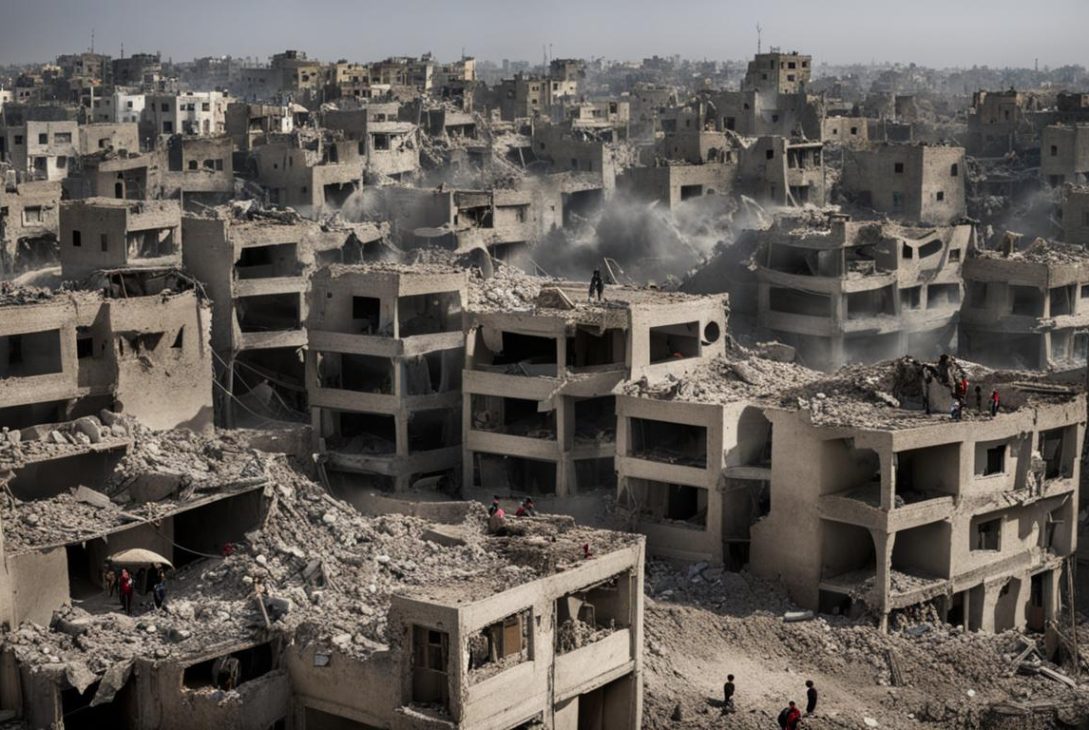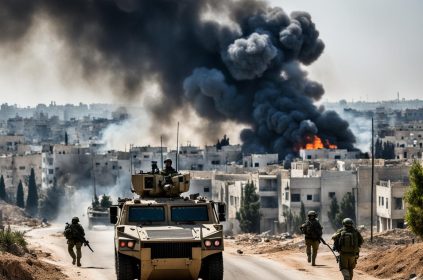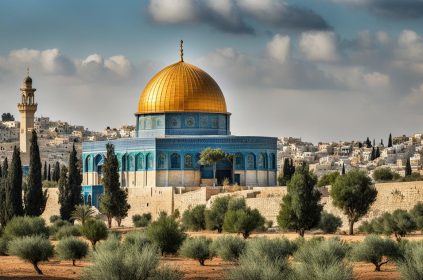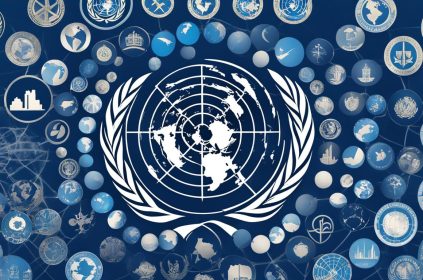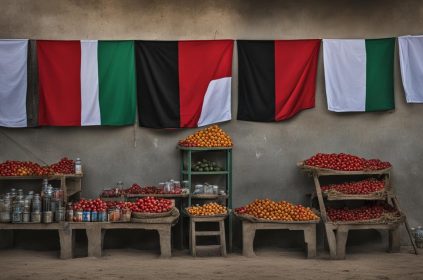The Israeli-Palestinian conflict, also known as the Middle East conflict, is a complex and longstanding issue that has captivated global attention. It revolves around the disputes and tensions between Israelis and Palestinians concerning land, borders, security, and political autonomy. Stretching back decades, the conflict has witnessed multiple wars, peace negotiations, and failed attempts at resolution. It is characterized by competing narratives, conflicting claims to the same territory, and divergent visions for the future of the region.
The history of the Israeli-Palestinian conflict traces back to the early 20th century with the Zionist movement and the establishment of Jewish settlements in Palestine. The conflict escalated with the 1947 United Nations Partition Plan, which proposed the creation of separate Jewish and Arab states. However, the rejection of this plan by Arab countries and the subsequent Arab-Israeli War set the stage for years of strife and tensions between Israelis and Palestinians.
Key Takeaways:
- The Israeli-Palestinian conflict is a complex and longstanding issue
- It involves disputes over land, borders, security, and political autonomy
- The conflict dates back to the early 20th century
- Competing narratives and visions for the region contribute to the complexity
- The conflict has witnessed numerous wars, peace negotiations, and failed attempts at resolution
The Historical Context of the Israeli-Palestinian Conflict
The Israeli-Palestinian conflict is deeply rooted in the historical events of the early 20th century. It began with the Zionist movement, which sought to establish a Jewish homeland in Palestine. Jewish settlements were established, leading to tensions with the Arab population of the region. The conflict escalated with the 1947 United Nations Partition Plan, which proposed the creation of separate Jewish and Arab states. However, the plan was rejected by Arab countries, leading to the Arab-Israeli War and the displacement of hundreds of thousands of Palestinians.
Key events such as the Six-Day War in 1967 and the Oslo Accords in the 1990s further shaped the trajectory of the conflict. The Six-Day War resulted in Israel gaining control over the West Bank, Gaza Strip, and East Jerusalem, further complicating the territorial disputes. The Oslo Accords, signed between Israel and the Palestine Liberation Organization (PLO), established the Palestinian Authority and laid the foundation for future peace negotiations.
The rejection of the 1947 United Nations Partition Plan by Arab countries and the subsequent Arab-Israeli War set the stage for years of conflict and tensions between Israelis and Palestinians.
With a long and complex history, the Israeli-Palestinian conflict continues to be a source of global attention and debate. Understanding the historical context is crucial in assessing the dynamics, narratives, and challenges that have shaped the conflict over time.
The Historical Context in a Table
| Key Events | Impact |
|---|---|
| Zionist Movement and Jewish Settlements | Tensions between Jews and Arabs |
| 1947 United Nations Partition Plan | Rejection by Arab countries and Arab-Israeli War |
| Six-Day War (1967) | Israeli control over West Bank, Gaza Strip, and East Jerusalem |
| Oslo Accords (1993) | Establishment of Palestinian Authority and future peace negotiations |
The table provides a concise overview of key historical events and their impact on the Israeli-Palestinian conflict. It highlights the establishment of Jewish settlements, the rejection of the UN Partition Plan, the consequences of the Six-Day War, and the significance of the Oslo Accords. Understanding the historical context is essential in comprehending the complexities and challenges that continue to shape the conflict today.
Key Issues in the Israeli-Palestinian Conflict
The Israeli-Palestinian conflict is characterized by several key issues that have hindered the pursuit of a lasting resolution. These issues revolve around the status of Jerusalem, the borders and boundaries of a future Palestinian state, Israeli settlements in the West Bank, the right of return for Palestinian refugees, and the division of resources such as water. Addressing these issues effectively is crucial for achieving a comprehensive and sustainable peace agreement.
The status of Jerusalem is one of the most contentious issues in the conflict. Both Israelis and Palestinians claim the city as their capital, and it holds deep religious and cultural significance for both sides. The question of Jerusalem’s final status has been a major obstacle in peace negotiations, with parties struggling to find a mutually acceptable solution.
Another key issue is the establishment and expansion of Israeli settlements in the West Bank. These settlements are considered illegal under international law and have been a major source of tension between Israelis and Palestinians. The presence of settlements complicates the possibility of a viable and contiguous Palestinian state, making it one of the most challenging issues to resolve.
Quote: “The Israeli-Palestinian conflict is characterized by several key issues that have hindered the pursuit of a lasting resolution.”
The right of return for Palestinian refugees is another significant issue in the conflict. Millions of Palestinians were displaced during the establishment of the state of Israel, and addressing their right to return to their ancestral homes has been a major point of contention. Finding a just solution that takes into account the rights and aspirations of both Palestinians and Israelis remains a complex challenge.
Lastly, the division of resources, particularly water, is a crucial issue in the Israeli-Palestinian conflict. Access to water sources is limited and heavily contested, causing hardship and inequality for both Israelis and Palestinians. Developing sustainable and equitable solutions for resource allocation is an essential component of any comprehensive peace agreement.
| Key Issues | Description |
|---|---|
| Status of Jerusalem | The city is claimed as the capital by both Israelis and Palestinians, making it a major point of contention in peace negotiations. |
| Israeli settlements | The establishment and expansion of settlements in the West Bank complicate the creation of a viable Palestinian state. |
| Right of return | The issue of Palestinian refugees’ right to return to their ancestral homes is a significant challenge in the conflict. |
| Resource division | Access to resources, particularly water, is limited and contested, leading to hardships for both Israelis and Palestinians. |
Addressing these key issues requires a commitment to dialogue, compromise, and a genuine understanding of the concerns and aspirations of both Israelis and Palestinians. Efforts to find sustainable solutions and promote mutual respect and recognition are essential for achieving a just and lasting resolution to the Israeli-Palestinian conflict.
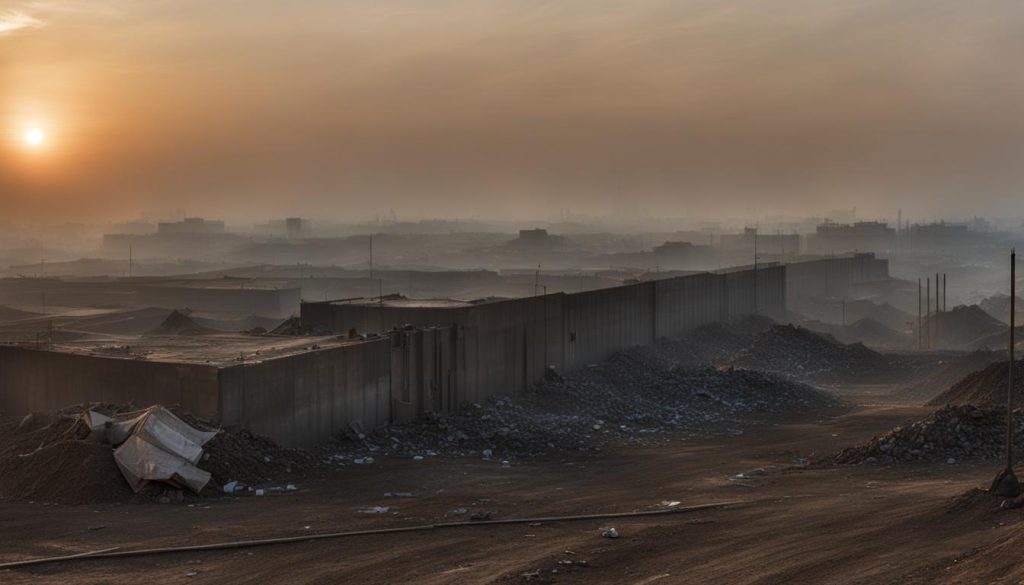
The Peace Process: Challenges and Failures
The Israeli-Palestinian conflict has seen numerous attempts at peace negotiations over the years, but challenges and failures have persistently hindered progress. One of the most significant milestones in the peace process was the Oslo Accords, signed in the 1990s. These agreements aimed to establish a framework for resolving the conflict and led to the creation of the Palestinian Authority. However, despite initial optimism, subsequent negotiations, such as the Camp David Summit in 2000, failed to produce a final peace agreement.
The Oslo Accords faced numerous challenges, including political divisions among both Israelis and Palestinians, acts of violence by extremist groups on both sides, and the issue of Israeli settlements in the West Bank. Settlement expansion has been a major point of contention, as Palestinians argue that it undermines the viability of a future Palestinian state. Additionally, the issue of Jerusalem, with its religious and cultural significance to both Israelis and Palestinians, has been a major obstacle to reaching a lasting peace agreement.
Despite these challenges, the international community, including the United States and various European countries, has continued to play an active role in facilitating peace negotiations. Efforts such as the Annapolis Conference in 2007 sought to revive the peace process, but ultimately fell short of achieving a breakthrough. The lack of trust, ongoing violence, and competing visions for the future of the region have all contributed to the failure of these negotiations.
| Key Challenges in the Peace Process | Impact on Peace Negotiations |
|---|---|
| Political divisions | Difficulty in reaching consensus on critical issues |
| Violence by extremist groups | Undermines trust and derails peace efforts |
| Israeli settlements in the West Bank | Obstacle to the establishment of a viable Palestinian state |
| Disagreements over the status of Jerusalem | Contentious issue with religious and cultural significance |
“The challenges in the Israeli-Palestinian peace process are numerous and complex. They require a genuine commitment from both sides, as well as sustained international support. Overcoming these challenges is crucial for achieving a just and lasting resolution to the conflict.”
The Situation in Gaza
The Gaza Strip is a small coastal territory located on the eastern coast of the Mediterranean Sea. It has a population of approximately 2 million people and is home to a significant Palestinian population. The situation in Gaza is closely related to the wider Israeli-Palestinian conflict and has been a source of ongoing tensions and humanitarian concerns.
Since 2007, the Gaza Strip has been governed by the Palestinian militant group Hamas. Hamas’ control of Gaza, combined with the ongoing Israeli-Palestinian conflict, has resulted in a complex and challenging situation for the people living in the territory. The Israeli government has imposed a blockade on Gaza, controlling the flow of goods and services in and out of the area.
This blockade has had a significant impact on the humanitarian situation in Gaza. The restrictions on the movement of people and goods have limited access to essential resources such as food, water, fuel, and medical supplies. The United Nations has described the situation in Gaza as a “humanitarian crisis,” highlighting the high levels of poverty, unemployment, and insecurity experienced by the population.
The ongoing tensions and lack of resolution in the Israeli-Palestinian conflict have fueled the situation in Gaza, exacerbating the hardships faced by the people living in the territory. Efforts to find a peaceful resolution and alleviate the humanitarian crisis in Gaza remain ongoing, with international organizations and stakeholders working towards a sustainable and just solution for all parties involved.
| Key Points | Details |
|---|---|
| Location | Gaza Strip is a small coastal territory located on the eastern coast of the Mediterranean Sea. |
| Governing Authority | Hamas, a Palestinian militant group, has controlled Gaza since 2007. |
| The Blockade | The Israeli government has imposed a blockade on Gaza, controlling the flow of goods and services in and out of the territory. |
| Humanitarian Crisis | The blockade has resulted in a dire humanitarian situation, with limited access to essential resources such as food, water, and medical supplies. |
| Resolution Efforts | International organizations and stakeholders continue to work towards finding a peaceful resolution and alleviating the humanitarian crisis in Gaza. |
Proposed Solutions to the Conflict
The Israeli-Palestinian conflict is a deeply complex issue that has eluded resolution for decades. However, various proposed solutions have been put forward in an attempt to address the root causes and bring about a lasting peace between Israelis and Palestinians.
The Two-State Solution
One of the most widely supported proposals is the two-state solution. This solution envisions the establishment of an independent Palestinian state alongside Israel, with defined borders and mutual recognition. Advocates argue that this would allow both Israelis and Palestinians to govern themselves, uphold their respective identities, and live in peace. However, the two-state solution faces significant challenges, such as the delineation of borders, the status of Jerusalem, the right of return for Palestinian refugees, and the dismantling of Israeli settlements in the occupied territories.
The One-State Solution
Another proposed solution is the one-state solution, which argues for the creation of a single, bi-national state where Israelis and Palestinians have equal rights and share governance. Proponents of this solution believe that it would address concerns of inequality, discrimination, and segregation. However, critics argue that a one-state solution would present its own set of challenges, including issues of power-sharing, national identity, and the potential loss of self-determination for both Israelis and Palestinians.
It is important to note that the Israeli-Palestinian peace process has seen numerous negotiations, agreements, and initiatives aimed at finding a solution to the conflict. While the two-state and one-state solutions are often discussed, there is no consensus on the best path forward. Ultimately, any viable solution to the Israeli-Palestinian conflict must address the underlying issues of land, borders, security, political autonomy, and the right of self-determination for both Israelis and Palestinians.
| Pros | Cons |
|---|---|
| Establishes an independent Palestinian state alongside Israel | Challenges in delineating borders and determining the status of Jerusalem |
| Allows for self-governance and upholding of respective identities | The right of return for Palestinian refugees |
| Addresses concerns of inequality, discrimination, and segregation | The dismantling of Israeli settlements in occupied territories |
Media Literacy and the Israeli-Palestinian Conflict
The Israeli-Palestinian conflict has received significant media coverage over the years, but it is crucial for readers and viewers to approach news reports with a critical eye. Media bias, whether intentional or unintentional, can shape public understanding and perceptions of the conflict. Therefore, developing media literacy skills is essential for obtaining a well-rounded and accurate understanding of the complexities involved.
Media bias occurs when news organizations present information with a particular ideological or political slant. In the case of the Israeli-Palestinian conflict, media bias can manifest in various ways. Some outlets may prioritize one side’s viewpoint over the other, leading to an imbalance in reporting. Others may sensationalize or oversimplify complex issues, contributing to a lack of nuance and depth in public understanding.
To navigate media bias effectively, readers and viewers can employ media literacy strategies. Fact-checking information, verifying sources, and cross-referencing different news outlets can help identify potential biases and inaccuracies. It is also essential to consider multiple perspectives and seek out diverse news sources to gain a more comprehensive understanding of the conflict.
“Trust, but verify. It is important to critically evaluate information and examine it from different angles.”
By developing media literacy skills, individuals can become more informed consumers of news and avoid being swayed by biased narratives. Understanding the nuances of the Israeli-Palestinian conflict requires a willingness to question assumptions, examine various viewpoints, and seek out reliable and diverse sources of information.
Non-Governmental Organizations and Peacebuilding Efforts
Non-Governmental Organizations (NGOs) play a vital role in peacebuilding efforts aimed at resolving the Israeli-Palestinian conflict. These organizations work tirelessly to bridge divides, foster dialogue, and promote reconciliation between Israelis and Palestinians. By engaging in various initiatives and programs, NGOs provide platforms for interaction, understanding, and empathy building.
One notable NGO is Breaking the Silence, an organization founded by former Israeli soldiers who are committed to exposing the realities of the occupation. Through testimonies and awareness campaigns, they shed light on the human rights abuses and the impact of the conflict on both Palestinians and Israelis. Their work encourages critical reflection and challenges prevailing narratives, contributing to a more nuanced understanding of the conflict.
Another example is The Parents Circle-Families Forum, a grassroots organization that brings together bereaved Israeli and Palestinian families who have lost loved ones to the violence. Through dialogue and personal connections, they strive to foster empathy, understanding, and reconciliation. Their unique perspective and shared experiences offer a powerful testament to the human cost of the conflict and the urgent need for peace.
| NGO | Mission | Key Initiatives |
|---|---|---|
| Breaking the Silence | Expose the realities of the occupation and promote critical reflection | Testimonies, awareness campaigns, public speaking engagements |
| The Parents Circle-Families Forum | Foster empathy, understanding, and reconciliation | Dialogue meetings, joint memorial events, youth programs |
| Alliance for Middle East Peace (ALLMEP) | Strengthen the capacity and impact of peacebuilding organizations | Advocacy, networking, resource sharing |
“Our work is grounded in the belief that peace is possible, and that grassroots initiatives can make a difference. By bringing people together and facilitating dialogue, we strive to build bridges and lay the foundation for a just and lasting peace.” – The Parents Circle-Families Forum
Challenges and Impact
NGOs involved in peacebuilding face various challenges in their efforts to promote reconciliation and positive change. Political tensions, social divisions, and differing narratives create a complex and delicate environment. Additionally, these organizations often operate in the face of skepticism, opposition, and limited resources.
However, the impact of NGOs in the Israeli-Palestinian conflict should not be underestimated. Their work plays a crucial role in building trust, fostering understanding, and challenging the status quo. By providing spaces for dialogue, promoting empathy, and advocating for peace, NGOs contribute to the long-term goal of achieving a just and sustainable resolution to the conflict.
The Role of Education in Conflict Resolution
Education plays a crucial role in the resolution of the Israeli-Palestinian conflict. By incorporating peace education into the curriculum, both Israeli and Palestinian students can gain a greater understanding of each other’s perspectives, foster empathy, and develop the necessary skills for peaceful coexistence. Peace education initiatives aim to promote dialogue, critical thinking, and problem-solving skills, equipping students with the tools they need to navigate the complex realities of the conflict.
One approach to peace education is the inclusion of multiple narratives and perspectives in the curriculum. This allows students to gain a comprehensive understanding of the historical, social, and political factors that have shaped the conflict. By presenting different viewpoints, students are encouraged to think critically, challenge stereotypes, and develop a more nuanced understanding of the Israeli-Palestinian conflict.
Furthermore, peace education emphasizes the importance of respectful dialogue and active listening. By creating safe spaces for students to engage in meaningful conversations, educators can facilitate constructive discussions that promote understanding and empathy. Through these interactions, students learn the value of open-mindedness, respect, and cooperation, which are essential for conflict resolution.

Peace education also extends beyond the classroom. Extracurricular activities, such as joint projects, cultural exchanges, and peace camps, provide opportunities for Israeli and Palestinian students to interact in a non-threatening environment. These experiences allow students to build relationships, challenge stereotypes, and develop a sense of shared humanity.
The Value of Peace Education
Peace education has the potential to break the cycle of violence and foster a culture of peace in the Israeli-Palestinian context. By equipping young minds with the knowledge, skills, and attitudes necessary for peaceful coexistence, education can play a transformative role in shaping the future of the region. It offers a long-term, sustainable solution for resolving the Israeli-Palestinian conflict and building a more peaceful and just society.
| Benefits of Peace Education | Challenges in Implementing Peace Education |
|---|---|
|
|
International Involvement in the Israeli-Palestinian Conflict
The Israeli-Palestinian conflict has attracted significant international attention and involvement over the years. Various countries, organizations, and the United Nations have actively participated in peace negotiations and provided humanitarian aid to the region. International diplomacy plays a crucial role in facilitating dialogue, promoting understanding, and working towards a resolution to the conflict.
The United Nations has been at the forefront of international efforts to address the Israeli-Palestinian conflict. Through its various agencies and resolutions, the UN has provided a platform for negotiation, mediation, and peacebuilding. It has also been involved in humanitarian efforts, providing assistance to Palestinian refugees and advocating for the protection of civilians.
Additionally, many countries have taken an active role in promoting peace negotiations between Israelis and Palestinians. They offer support, resources, and diplomatic pressure to help bridge the gaps between the two parties. These international efforts often focus on finding common ground, addressing key issues, and encouraging both sides to engage in constructive dialogue.
However, achieving a lasting resolution to the Israeli-Palestinian conflict remains a complex challenge. Despite international involvement, peace negotiations have faced numerous obstacles, including political divisions, ongoing violence, and deeply ingrained grievances. Sustained international engagement and support are crucial for fostering a conducive environment for peace and addressing the root causes of the conflict.
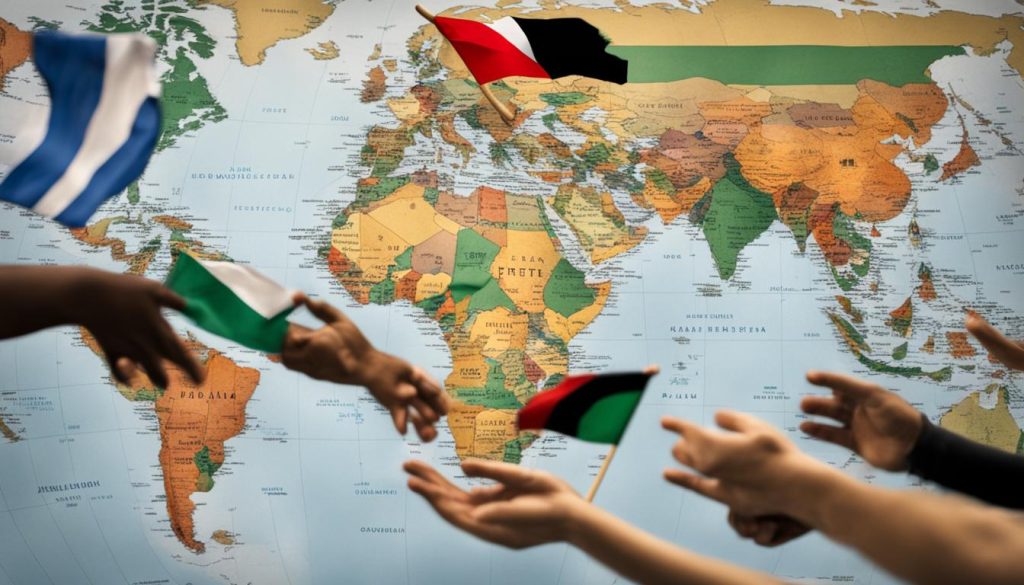
| Key Players | Role |
|---|---|
| United Nations | Facilitating peace negotiations, providing humanitarian aid, advocating for a two-state solution |
| United States | Acting as a mediator, providing financial and military aid, promoting peace talks |
| European Union | Supporting peace negotiations, providing economic assistance, advocating for a two-state solution |
| Arab League | Supporting Palestinian rights, advocating for the establishment of a Palestinian state |
| Quartet on the Middle East | Comprising the United Nations, United States, European Union, and Russia, it mediates peace negotiations and supports peacebuilding efforts |
Humanitarian Challenges in the Israeli-Palestinian Conflict
The Israeli-Palestinian conflict has had a profound impact on the humanitarian situation in the region, affecting both Israelis and Palestinians. The ongoing conflict has resulted in a significant number of refugees, with Palestinians being displaced from their homes and seeking refuge in neighboring countries. This humanitarian crisis has created immense challenges for the affected individuals and communities, including limited access to basic resources such as food, water, and healthcare.
Refugees face numerous hardships, including overcrowded living conditions, lack of proper sanitation facilities, and limited access to education. The United Nations Relief and Works Agency for Palestine Refugees in the Near East (UNRWA) plays a crucial role in providing assistance and support to Palestinian refugees, but the sheer scale of the crisis presents ongoing challenges. Efforts to address the needs of refugees and improve their living conditions are essential for ensuring their well-being and dignity.
Access to resources such as water is another pressing humanitarian challenge in the Israeli-Palestinian conflict. Water scarcity is a significant issue, particularly in the Gaza Strip, where the population heavily relies on limited water sources for their daily needs. The ongoing conflict exacerbates the situation, making it difficult to develop and maintain necessary infrastructure for water supply and sanitation. Finding sustainable solutions to address water scarcity, while considering the needs and rights of both Israelis and Palestinians, is crucial for ensuring a better future for all.
| Humanitarian Challenges | Solutions |
|---|---|
| Refugee crisis | – Increased international support and funding for humanitarian aid organizations – Promotion of safe and dignified return for refugees – Sustainable development and reconstruction efforts |
| Access to resources | – Promotion of equitable distribution of resources – Development of sustainable infrastructure for water supply and sanitation – Cooperation and coordination between Israeli and Palestinian authorities |
The Israeli-Palestinian conflict has caused immense suffering and has resulted in a complex humanitarian crisis. Addressing the challenges faced by refugees and improving access to essential resources are critical steps towards finding a just and lasting resolution to the conflict. International cooperation, support for humanitarian organizations, and sustainable development efforts are all vital in mitigating the impact of the crisis and fostering a better future for all those affected.
Conclusion
The Israeli-Palestinian conflict is a complex and deeply rooted issue that has captured the attention of the world. It is crucial to approach this conflict with empathy, open-mindedness, and a genuine desire for understanding. By delving into the intricacies of the conflict, considering its historical context, and supporting peacebuilding efforts, individuals can contribute to the pursuit of a just and lasting resolution.
Understanding the diverse narratives and competing claims is essential in fostering dialogue and finding common ground. It is through ongoing dialogue and engagement that peaceful resolutions can be achieved. The pursuit of peace requires the commitment and collaboration of all parties involved.
It is important to remember that the Israeli-Palestinian conflict is not just a geopolitical issue; it is a human issue. It affects the lives and well-being of millions of people, both Israelis and Palestinians. As global citizens, we must continue to support efforts that address the humanitarian challenges and alleviate the suffering caused by the conflict.
The path to peace will not be easy, but with determination, understanding, and a commitment to justice, a resolution to the Israeli-Palestinian conflict is possible. By working together, individuals, communities, and nations can contribute to a future where Israelis and Palestinians can coexist in peace and security.
FAQ
What is the Israeli-Palestinian conflict?
The Israeli-Palestinian conflict is a complex and longstanding dispute between Israelis and Palestinians over land, borders, security, and political autonomy.
How did the Israeli-Palestinian conflict begin?
The conflict has its roots in the early 20th century with the Zionist movement and the establishment of Jewish settlements in Palestine.
What are the main issues in the Israeli-Palestinian conflict?
The main issues include the status of Jerusalem, borders and boundaries, Israeli settlements in the West Bank, the right of return for Palestinian refugees, and the division of resources.
Have there been any attempts to resolve the conflict?
Yes, there have been numerous attempts, such as the Oslo Accords in the 1990s, but a final peace agreement has not been reached.
What is the situation in Gaza?
Gaza is a small coastal territory ruled by the Palestinian militant group Hamas since 2007. It is under an Israeli blockade, leading to a dire humanitarian situation.
What are the proposed solutions to the conflict?
The two-state solution, which envisions an independent Palestinian state alongside Israel, is widely supported. There are also proponents of a one-state solution.
How can I critically evaluate news coverage of the Israeli-Palestinian conflict?
Developing media literacy skills, such as fact-checking, considering multiple perspectives, and seeking diverse news sources, is important.
What role do non-governmental organizations play in the conflict?
NGOs work to promote understanding and reconciliation between Israelis and Palestinians, fostering peacebuilding efforts.
How can education contribute to conflict resolution?
Peace education initiatives aim to promote dialogue, critical thinking, and empathy among students from both communities, challenging stereotypes.
What is the role of international involvement in the conflict?
The international community, including the United Nations, plays an active role in facilitating peace negotiations and providing humanitarian aid.
What are the humanitarian challenges in the Israeli-Palestinian conflict?
These challenges include Palestinian refugees, displacement, restricted access to resources, and security concerns for Israelis.
Source Links
- https://eloncdn.blob.core.windows.net/eu3/sites/478/2017/08/Israel-Palestine-Resource-Packet.pdf
- https://medium.com/backyard-theology/16-resources-to-help-you-understand-the-israeli-palestinian-conflict-3af9cf39e680
- https://www.goodreads.com/book/show/57547.The_Palestine_Israeli_Conflict
gaza strip conflict israeli-palestinian conflict middle east conflict political unrest in palestine Select Understanding the Israeli-Palestinian Conflict: A Friendly Guide Understanding the Israeli-Palestinian Conflict: A Friendly Guide
Last modified: January 17, 2024


